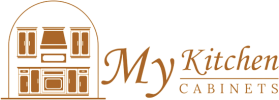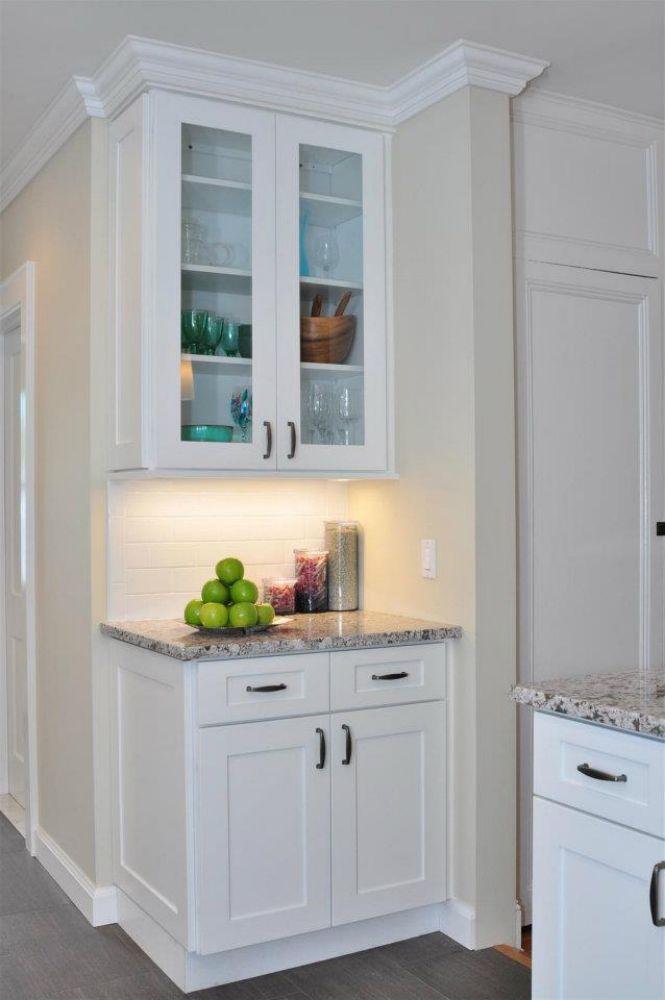Designing a kitchen is one of the most exciting yet challenging home improvement projects. The choices you make—from color schemes and materials to layouts and finishes—will define how your kitchen looks, feels, and functions for years to come. Among all the elements in a remodel, kitchen cabinets play the most central role. They set the tone of your design, influence your storage capacity, and significantly impact your budget.
But with countless styles, configurations, and finishes available, many homeowners quickly find themselves overwhelmed. That’s where professional design help comes in. Whether you’re remodeling your entire kitchen or simply upgrading cabinetry, working with a professional designer or cabinet expert can help you make smart, confident decisions that maximize both beauty and functionality.
In this comprehensive guide by My Kitchen Cabinets, we’ll explain how to get professional design help when choosing new kitchen cabinets, the benefits of doing so, and what to expect during the process.
Why Professional Design Help Matters When Selecting Kitchen Cabinets
Kitchen cabinets aren’t just about storage—they define the aesthetic and practicality of your kitchen. A professional designer helps you strike the perfect balance between form and function.
Cabinet design isn’t only about picking colors or materials. It’s about understanding proportions, workflow, ergonomics, lighting, and how cabinetry integrates with other kitchen features like appliances, countertops, and flooring. Without expert guidance, you risk:
-
Choosing cabinets that don’t fit properly.
-
Overlooking key storage features.
-
Clashing color palettes or finishes.
-
Underestimating space or workflow needs.
A professional ensures that every detail—from door style to hardware—is cohesive and tailored to your needs.
The Benefits of Working with a Kitchen Cabinet Design Professional
Hiring a professional doesn’t just simplify the process—it enhances results. Let’s explore the key advantages of working with a cabinet design expert.
1. Expert Space Planning
A kitchen designer understands how to maximize every square inch. They evaluate your floor plan, traffic flow, and storage needs to ensure your cabinets are placed strategically.
Whether you have a compact kitchen or a large open layout, a professional will recommend the best cabinet configurations—such as L-shaped, U-shaped, or galley designs—to optimize space and efficiency.
2. Personalized Style Recommendations
Professional designers have an eye for color, proportion, and harmony. They’ll help you choose finishes, door styles, and layouts that match your home’s aesthetic—whether it’s traditional, modern, farmhouse, or transitional.
They’ll also consider lighting, countertop tones, and flooring materials to ensure your kitchen cabinets blend seamlessly with the rest of your home.
3. Access to Exclusive Cabinet Lines and Materials
Many professional designers partner with premium cabinet suppliers, like My Kitchen Cabinets, giving clients access to materials, finishes, and hardware not always available in retail stores.
This ensures you receive high-quality, durable cabinetry built to last—and designed to perfectly suit your space.
4. Accurate Measurements and 3D Visualizations
Even a half-inch error can cause major installation issues. Designers use precise measurements and 3D software to visualize how your kitchen will look before a single cabinet is ordered.
You’ll see realistic renderings, adjust designs, and make informed choices before committing to your investment.
5. Budget Optimization
Professional designers understand how to balance quality, functionality, and cost. They’ll help you prioritize where to spend—like soft-close hardware or custom storage—and where to save, ensuring your remodel stays within budget.
Different Types of Professionals Who Can Help with Kitchen Cabinet Design
Depending on your project scope and budget, there are several types of professionals who can guide you through the design process.
1. Kitchen and Bath Designers
Certified Kitchen Designers (CKDs) or interior designers specializing in kitchens bring technical and creative expertise. They often work independently or through design firms.
They’re ideal for full-scale remodels that require layout reconfiguration or integration with plumbing and electrical systems.
2. Cabinet Design Specialists
Companies like My Kitchen Cabinets employ trained specialists who focus exclusively on cabinetry. These experts know how to match cabinet lines, finishes, and accessories to your goals, ensuring a cohesive and functional result.
3. In-Store Design Consultants
Many home improvement stores and cabinet showrooms offer in-house design services. While convenient, these designers typically have limited product options compared to custom cabinet specialists.
4. Independent Contractors or Builders
If you’re working with a general contractor, they may recommend a cabinet designer they trust. This approach streamlines the process, as the designer and installer can coordinate directly.
How the Kitchen Cabinet Design Process Works
Working with a designer follows a structured process that ensures your ideas are transformed into a functional, visually stunning kitchen.
Step 1: Initial Consultation
You’ll meet with your designer to discuss your vision, lifestyle needs, and budget. Be prepared to share inspiration photos, layout measurements, and existing kitchen challenges.
Designers from My Kitchen Cabinets will evaluate how you use your space—whether you cook frequently, entertain often, or need family-friendly functionality—to create a plan that fits your habits and goals.
Step 2: Site Measurement and Assessment
Accurate measurements are taken of your walls, windows, doors, and ceiling height. This step ensures that every cabinet fits perfectly within your kitchen layout.
Your designer will also assess factors such as lighting, plumbing, and electrical outlets.
Step 3: Concept and Layout Development
Based on your preferences and measurements, your designer will create a preliminary layout. This includes cabinet placement, appliance positioning, and workflow optimization using the “kitchen work triangle” principle (sink, stove, refrigerator).
Step 4: Material and Finish Selection
Here’s where creativity shines. You’ll select cabinet materials (like wood, MDF, or laminate), colors, finishes, and door styles.
Designers often bring physical samples so you can compare options in your actual lighting environment.
Step 5: 3D Rendering and Design Review
Using design software, your designer will generate a 3D model of your new kitchen. You’ll see exactly how your kitchen cabinets will look alongside countertops, backsplashes, and flooring.
This visual stage allows you to make adjustments before finalizing your order.
Step 6: Final Design Approval and Ordering
Once you’re happy with the design, your cabinet order is placed. The designer ensures all specifications, colors, and measurements are correct before production begins.
Step 7: Installation Coordination
Many design firms or cabinet suppliers, like My Kitchen Cabinets, work directly with installers to ensure smooth delivery and precise installation. Designers often oversee this stage to confirm that the final kitchen matches the approved plan.
What to Bring to Your Kitchen Cabinet Design Consultation
To make the most of your professional design session, bring the following items:
-
Room Measurements: Walls, windows, ceiling height, and appliance dimensions.
-
Floor Plan (if available): Helps designers visualize your space layout.
-
Photos of Existing Kitchen: Identify challenges or areas for improvement.
-
Inspiration Images: From Pinterest, magazines, or websites to communicate your desired style.
-
Budget Range: Helps the designer prioritize materials and options.
Having this information ready ensures a productive consultation and accelerates the design process.
How to Choose the Right Kitchen Cabinet Design Professional
Selecting the right expert can make or break your remodeling experience.
1. Look for Experience and Certifications
Choose a designer or company with proven expertise in cabinetry and kitchen layouts. Certifications from NKBA (National Kitchen & Bath Association) or equivalent organizations indicate professional training.
2. Review Portfolios
Ask to see examples of completed projects. Portfolios reveal a designer’s style range and attention to detail.
3. Ask About Design Software
Reputable designers use advanced 3D visualization tools to show realistic renderings. This ensures clarity and confidence in your final design decisions.
4. Check References and Reviews
Client testimonials and online reviews provide insight into reliability, communication, and project satisfaction.
5. Consider Communication Style
Choose a designer who listens, understands your vision, and provides clear explanations. You’ll be collaborating closely, so good rapport is essential.
Common Mistakes Homeowners Make Without Design Help
Many homeowners underestimate the complexity of cabinet design and end up making costly mistakes.
Common Pitfalls Include:
-
Miscalculating cabinet sizes or spacing.
-
Overcrowding with too many upper cabinets.
-
Choosing mismatched finishes or styles.
-
Ignoring workflow efficiency (e.g., placing dishwasher too far from sink).
-
Forgetting to accommodate small appliances or outlets.
Professional design help eliminates these issues before they arise, saving time, stress, and unnecessary expense.
The Role of My Kitchen Cabinets in Professional Design Assistance
At My Kitchen Cabinets, we pride ourselves on providing both high-quality products and exceptional design support. Our expert team helps clients every step of the way—from initial consultation to installation.
Our Services Include:
-
Personalized cabinet design consultation.
-
Detailed measurements and layout planning.
-
Professional 3D renderings and visual mockups.
-
Product and finish selection guidance.
-
Budget-friendly solutions without compromising quality.
We combine craftsmanship with design expertise to ensure your kitchen is as beautiful as it is functional.
Budgeting for Design Assistance
While hiring a designer adds a cost, it’s an investment that pays off. Many professionals include design services in the price of your cabinet purchase, particularly when working with dedicated suppliers like My Kitchen Cabinets.
Typical Cost Breakdown:
-
Independent Designer Fee: $75–$200 per hour.
-
Showroom or Supplier Consultation: Often free or discounted with purchase.
-
Full-Service Design Packages: May include layout, material selection, and 3D visualization at a flat rate.
In many cases, the money you save by avoiding design mistakes more than covers the cost of professional assistance.
How to Prepare for Your Kitchen Design Collaboration
To get the most value from your partnership with a designer:
-
Be clear about your budget and goals.
-
Stay open to expert recommendations.
-
Communicate any special requirements (e.g., accessibility, family size, cooking habits).
-
Review all plans carefully before approving.
Your active participation ensures the final design truly reflects your lifestyle and taste.
Conclusion
Designing a kitchen is both an art and a science—and when it comes to choosing kitchen cabinets, professional guidance can make all the difference. A design expert helps you visualize possibilities you might never have considered, ensuring every cabinet serves a purpose and every finish harmonizes beautifully.
Working with professionals like My Kitchen Cabinets streamlines your renovation process. You’ll receive expert space planning, personalized color and finish advice, access to premium materials, and precise 3D design renderings—all tailored to your needs and budget.
Ultimately, professional design help transforms your dream kitchen from concept to reality, eliminating stress and ensuring your investment delivers lasting satisfaction. When every inch counts and every detail matters, don’t go it alone—trust experts who specialize in crafting stunning, functional kitchens built to last.
FAQs
1. Why should I hire a professional when choosing kitchen cabinets?
A professional ensures your cabinets fit your layout perfectly, complement your design goals, and maximize functionality—all while staying within your budget.
2. What can I expect during a design consultation?
You’ll discuss your goals, review layout options, select materials and finishes, and view 3D renderings to visualize your new kitchen before purchasing.
3. Does My Kitchen Cabinets offer design assistance?
Yes. My Kitchen Cabinets provides expert design consultations, detailed measurements, and 3D planning to help clients create the perfect kitchen layout and style.
4. Can I get professional design help if I have a small budget?
Absolutely. Many cabinet suppliers, including My Kitchen Cabinets, offer free or affordable design services with cabinet purchases, making professional help accessible to all budgets.
5. How long does the kitchen cabinet design process take?
The process typically takes 1–3 weeks, depending on design complexity, revisions, and material selections.
Read: What are the most popular finishes for luxury kitchen cabinets?
Read:

